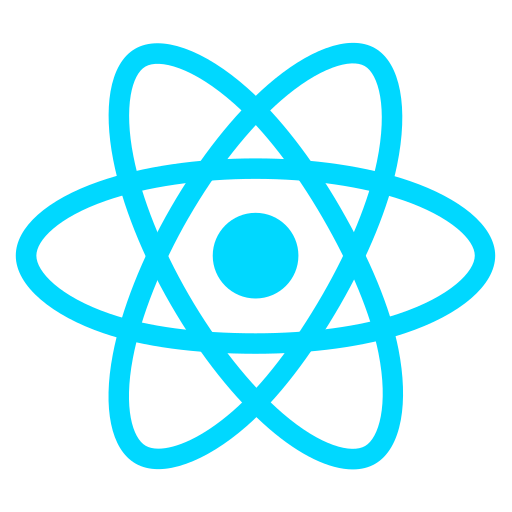Modern mobile development often comes down to a choice between two dominant frameworks: React Native and Flutter. These cross-platform development behemoths have revolutionized the way we design and deploy modern mobile applications. While React Native, powered by Facebook (now Meta), capitalizes on the popularity of JavaScript and the React ecosystem, Flutter, created by Google, offers an innovative approach with the Dart language and a unique rendering engine.
The following analysis examines the strengths and weaknesses of React Native and Flutter, focusing on technical features, performance, developer experience, and business impact. Understanding their differences is key to making informed decisions in a fast-paced development landscape.
Contents
React Native: Overview 
Launched in 2015 by Facebook, React Native revolutionized cross-platform mobile development. It builds on React’s core principles, allowing developers to create native apps using JavaScript and the declarative approach that made React popular.
Architecture and operation
At the core of React Native is the “bridge,” a communication layer that allows JavaScript and native platform components to interact. It translates JavaScript calls into native instructions for iOS and Android. The framework uses a multi-threading system, with JavaScript running on a separate thread from the main UI thread, ensuring smooth performance.
Ecosystem and Community
React Native benefits from a vast ecosystem powered by npm, the world’s largest package repository. Developers have access to a multitude of ready-to-use libraries and components. The community regularly contributes to improving the framework through:
- Third-party packages extending native functionality
- Solutions for common use cases
- Rich documentation and extensive learning resources
Distinctive advantages
The ability to share up to 80% of code between iOS and Android platforms makes this framework highly cost-effective and efficient for businesses.
Challenges and considerations
- Performance, while generally satisfactory, can be impacted by the bridge mechanism during complex operations.
- Native code may be required for specific functionalities, necessitating expertise in iOS and Android development.
- Major framework updates may require significant migration efforts.
Flutter: Overview 
Introduced by Google in 2017, Flutter offers a unique approach to cross-platform mobile development, using its own rendering engine and the Dart language. This gives developers fine-grained control over every pixel displayed on screen.
Architecture and operation
Flutter’s architecture is centered around the Skia rendering engine, used by Chrome and Android. This approach eliminates the need for a “bridge” to native components, as Flutter directly draws the UI elements. The structure includes:
- The Flutter engine (written in C++), which hosts the Dart virtual machine
- The Framework layer (written in Dart), with widgets and design tools
- Foundations for animations, gestures, and basic services
Ecosystem and Widgets
Flutter stands out for its comprehensive and coherent widget system. Two main sets are offered:
- Material Design: Implements Google’s design guidelines
- Cupertino: Mimics the iOS look and feel.
Flutter’s “everything is a widget” approach enables extensive customization and remarkable visual consistency across platforms. The framework’s ecosystem includes official and community packages via pub.dev, the Dart package manager.
Platform highlights
Flutter delivers native performance through AOT (ahead-of-time) compilation and the absence of a bridge. Its rendering engine ensures consistent visuals across platforms, while powerful development tools, such as the widget inspector and profiling tools, enhance developer productivity.
Challenges and limitations
- Application size is generally larger due to the embedded rendering engine.
- The adoption of Dart, while technically justified, represents a new learning curve for teams.
- The ecosystem, while growing rapidly, is younger than that of React Native, and some specialized packages may lack maturity.
React Native vs. Flutter Comparison Table
| Aspect | React Native | Flutter |
| Execution Performance | Performance can be affected by JavaScript bridging during complex operations. | Excels in complex animations and rich interfaces, maintaining more consistent 60 FPS rendering due to the Skia engine. |
| Resource Consumption | May consume more memory, particularly with long lists or complex animations. | Optimized memory consumption, thanks to Dart and its efficient garbage collector. |
| Learning Curve | More accessible to developers familiar with JavaScript and React. | Requires learning Dart, but offers excellent documentation. |
| Ecosystem Maturity | Benefits from the extensive npm ecosystem and numerous mature libraries. | Ecosystem is growing, with increasing quality of packages on pub.dev, though fewer in number. |
| Community Support | Large, established community with extensive resources. | Supported by Google and a fast-growing community. |
| Use Cases | Best suited for applications with heavy web integration, code reuse, and native-like UIs. | Ideal for applications requiring high graphics performance, custom UIs, visual consistency across platforms, and fast prototyping. |
| Future Prospects | Focusing on new architecture to improve performance. | Expanding to web and desktop with Flutter 3.0. |
| Adoption Trends | Strong presence in established companies. | Rapidly gaining traction, particularly in new projects. |
Conclusion
The choice between React Native and Flutter depends on the project context. React Native is ideal for teams with JavaScript expertise and significant web integration needs. Flutter offers superior performance and a unified approach, making it a strong option for new projects requiring complex UIs. Both frameworks continue to evolve and improve, each offering distinct advantages.
The final decision requires considering not only technical aspects, but also business considerations, team expertise, and long-term project objectives.
About TrackIt
TrackIt is an international AWS cloud consulting, systems integration, and software development firm headquartered in Marina del Rey, CA.
We have built our reputation on helping media companies architect and implement cost-effective, reliable, and scalable Media & Entertainment workflows in the cloud. These include streaming and on-demand video solutions, media asset management, and archiving, incorporating the latest AI technology to build bespoke media solutions tailored to customer requirements.
Cloud-native software development is at the foundation of what we do. We specialize in Application Modernization, Containerization, Infrastructure as Code and event-driven serverless architectures by leveraging the latest AWS services. Along with our Managed Services offerings which provide 24/7 cloud infrastructure maintenance and support, we are able to provide complete solutions for the media industry.

